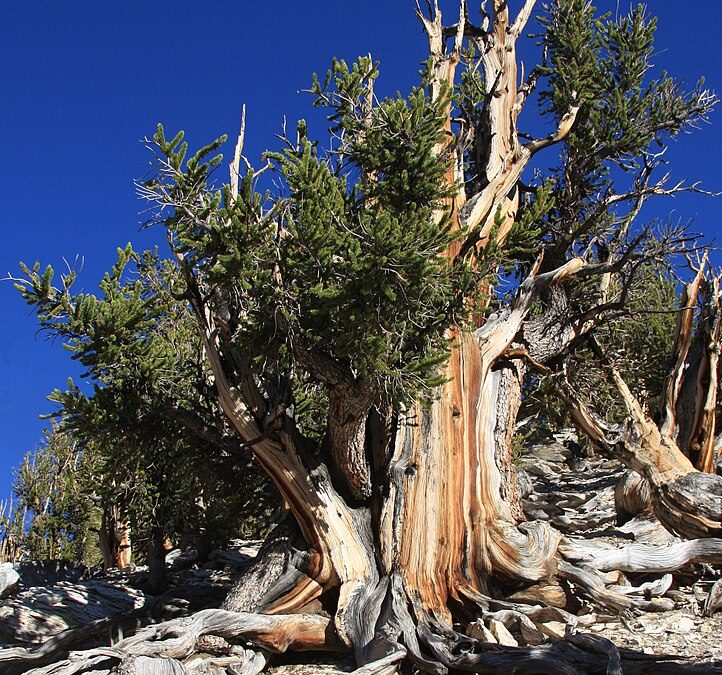Pinus longaeva photo © Dcrjsr
Trees have evolved into zombies in the sense that they comprise mainly dead cells in maturity. This reveals that the energy built into wood is superfluous to the economy of arborescence.

Prof. Mumblebard claims: “Wood forms the skeleton of plants, providing essential support for the tree growth-form. Allocation of energy and – to a lesser extent – nutrients to wood is unavoidable and these resources cannot be retrieved during the lifetime of the individual tree because all stems that are extremely lignified happen to have concentric growth.”
Robin and the Honey Badger respond: “Living bones are biomass but dead wood is necromass, so it’s puzzling that hardwood trees sink so much irretrievable energy into wood. Plants have three theoretical options for saving energy as they grow tall. Firstly, they could minimise necromass and conserve energy by growing hollow like bamboos rather than growing solid. Secondly, they could evolve an enzymatic ability to autolyse cellulose for internal recycling, avoiding the wastage of energy in heartwood and shed branches. And thirdly, they could retrieve nutrients by other means such as encouraging fungi and termites to tunnel within the trunks during the life of the plant while leaving an intact cylinder of wood for support. But most trees don’t use any of these options and forfeit so much energy in cellulose that they are quazi-zombies. The reason is that, in the world’s hardwood-dominated forests and woodlands, photosynthetic energy is cheap relative to the scarce resources – such as certain micro-nutrients – which require thrift and internal recycling.”

Please join us here at the Bio-edge with your own comments. In the discussion below we encourage links to any evidence supporting either Prof. Mumblebard or Robin and the Honey Badger. Illustrations are welcome but please cite all sources or we may be forced under copyright to delete your comment.

